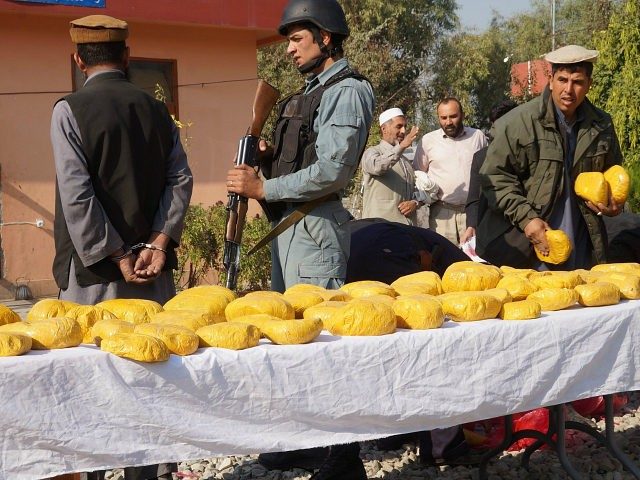American airstrikes have obliterated more Taliban labs in Afghanistan used to process opium and its heroin derivative, dealing a $4 million blow to the narco-jihadist group’s economic engine, purportedly shows a video released by U.S. Forces-Afghanistan (USFOR-A).
In a statement issued Thursday, USFOR-A reveals:
Carrier-based U.S. Navy F/A-18 Super Hornets conduct a strike on multiple Taliban narcotics production facilities in Helmand province on December 7, 2017, as part of an ongoing campaign by the Afghan National Defense and Security Forces (ANDSF) and United States Forces-Afghanistan (USFOR-A) to cut off the Taliban’s economic lifelines and degrade their ability to continue operations.
The strike was one of several, conducted overnight, contributed to the destruction of nearly $4 million in direct Taliban revenues.
Helmand is the top poppy producing province in Afghanistan, which provides more opium and heroin than any other country in the world despite more than $8.5 billion in American taxpayer funds invested on counternarcotics operations in the war-ravaged country since 2001.
The province, located along the Pakistan border next to the Afghan Taliban birthplace of Kandahar, is one of the deadliest regions for U.S. troops and their allies.
Taliban narco-jihadists, which generate up to 60 percent of their funding from the illicit opium trade, control most of Helmand, according to the U.S. military.
Marking a significant departure from the previous administrations, U.S. President Donald Trump has authorized American Gen. John Nicholson, the top commander of U.S. and NATO troops in Afghanistan, to blast the Taliban’s opium fields and labs.
Including the most recent strikes, the U.S. military and their Afghan counterparts have deprived the Taliban of up to $14 million in opium revenue in the last few weeks.
Gen. Nicholson asserted last week that U.S. strikes on the Taliban’s opium would continue.
“So these strikes were just the first step in attacking the Taliban’s financial engine, and they will continue,” Nicholson told Pentagon reporters, later adding:
This is not a war on drugs. This is a war on Taliban revenue. So, there’s about 13 drug trafficking organizations in Afghanistan, seven of them connected to the Taliban in Helmand alone…we are striking those specific organizations that are linked to … Taliban cartels if you will, that now provide the majority of their revenue.
Considered one of his first major Afghan war decisions after taking office in 2009, former President Barack Obama oversaw the end of the main U.S.-led opium eradication effort.
While eradication efforts nearly disappeared, Afghanistan’s opium production reached historic levels.
In 2016, opium production stood at an estimated 9,000 metric tons, nearly doubling the figures from the previous year.

COMMENTS
Please let us know if you're having issues with commenting.